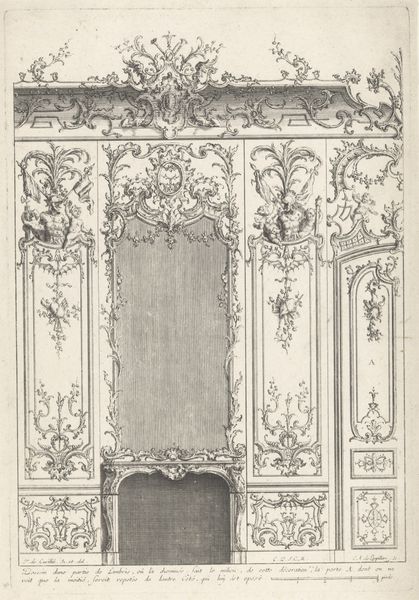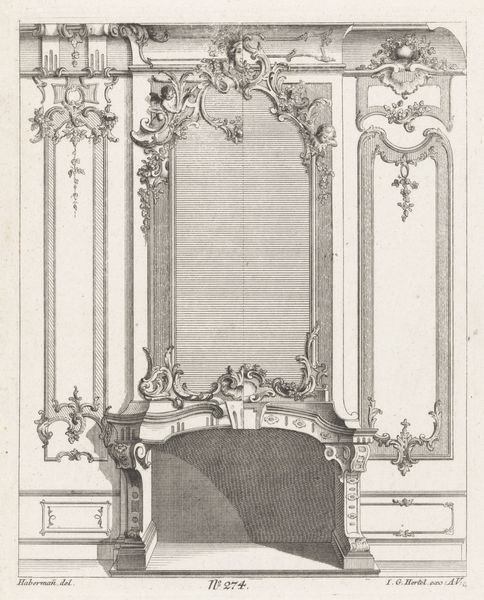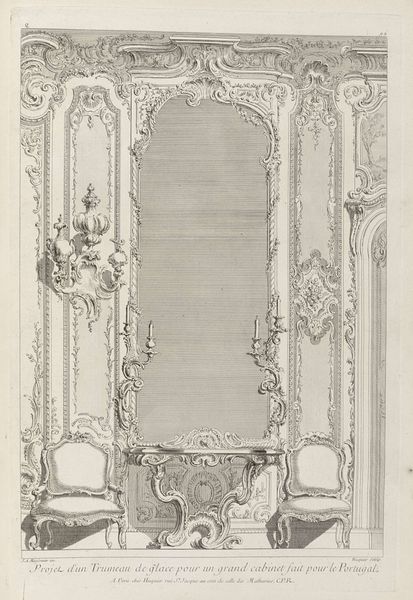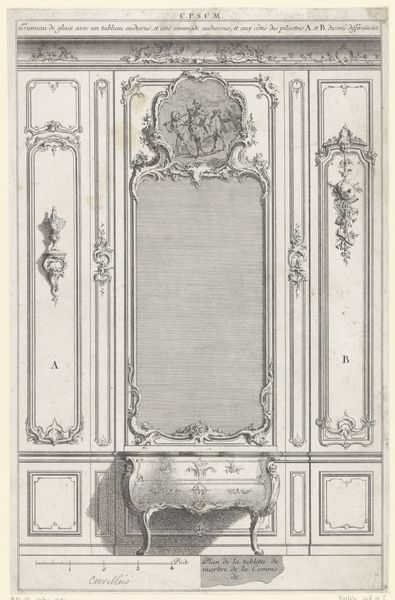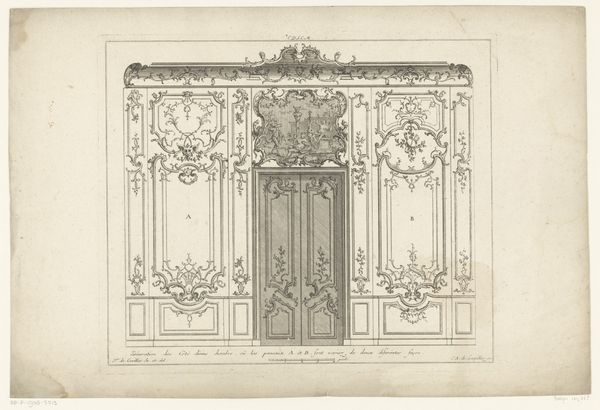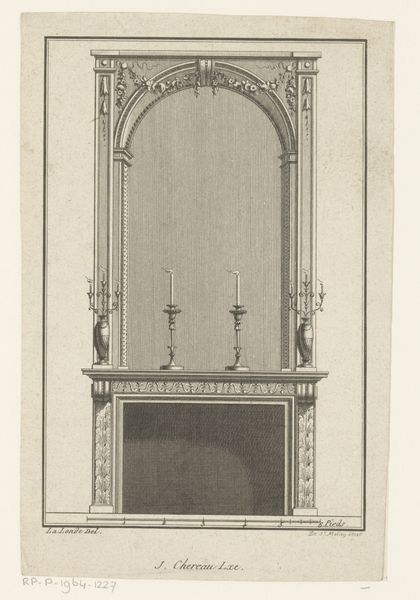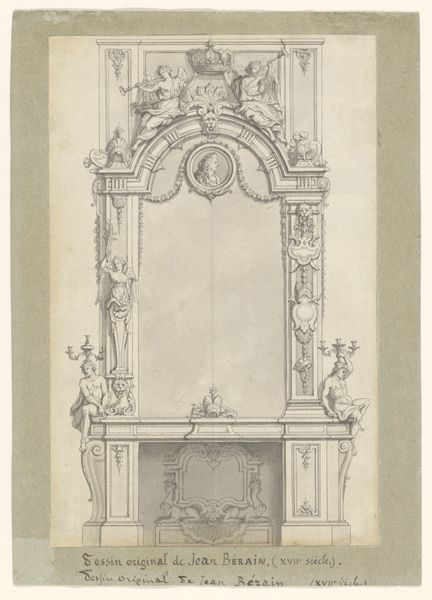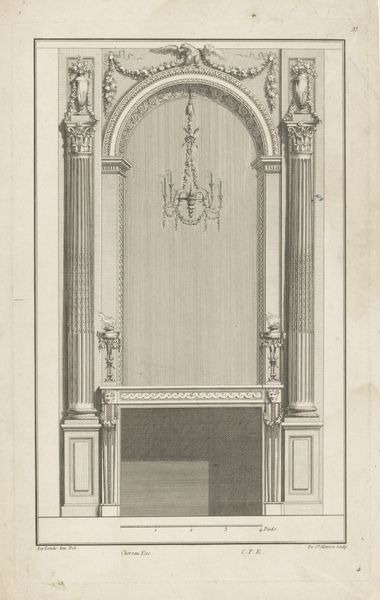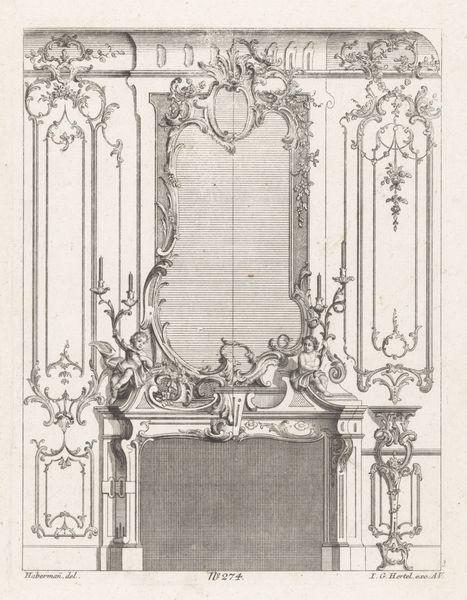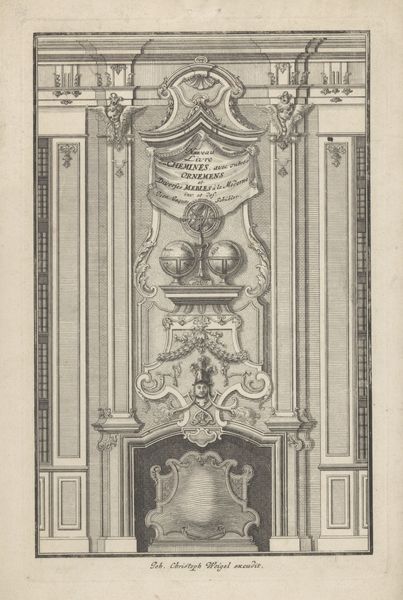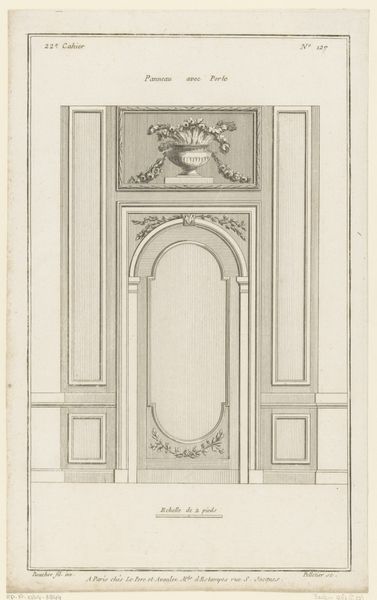
drawing, print, etching, architecture
#
drawing
#
baroque
# print
#
etching
#
etching
#
form
#
line
#
decorative-art
#
architecture
Dimensions: height 350 mm, width 238 mm
Copyright: Rijks Museum: Open Domain
Curator: The drawing, dating from 1735 to 1745, is titled "Schouw en deuren," attributed to Carl Albert von Lespilliez. It showcases a design for a mantelpiece and doors, rendered using etching and printmaking techniques. Editor: It has a delicate, almost lace-like quality. All those swirls and decorative elements—it gives the impression of incredibly skilled craftsmanship, but also makes me wonder about the labor involved in realizing something like this. Curator: Exactly, looking at the societal context, this reflects the Baroque era’s emphasis on elaborate ornamentation, a visual expression of power and affluence. Think about who commissioned such designs—likely wealthy landowners looking to elevate their status. Editor: And let's consider the etching process itself. What sort of acids, what sort of printing press, were employed? These were luxury goods but not just by way of aesthetic-- the very technologies used would have signified position and control. The artist or artisans probably acted almost as a cog in the wheel here, contracted out to realize an imagined extravagance of someone of considerable power. Curator: Precisely. The imagery, though seemingly ornamental, also conveys ideological weight. Notice the pastoral scenes incorporated into the panels. The museum or gallery would have to really highlight this type of design to give that understanding. Editor: Absolutely, it's essential to see this not just as a drawing, but as a record of both the artist’s skill and the patron’s ambitions, brought to life through meticulous work with material consequence. I can only image the kind of control and influence a fireplace and ornate doorways can signify, practically creating little 'stages' within grand houses that continue to impress guests in perpetuity. Curator: Indeed. When you consider all of the material inputs for one design aspect and its social consequences, it’s much more than decoration. Editor: Yes, thinking of it in relation to all of the social systems in place to manifest it definitely changes your perspective.
Comments
No comments
Be the first to comment and join the conversation on the ultimate creative platform.
